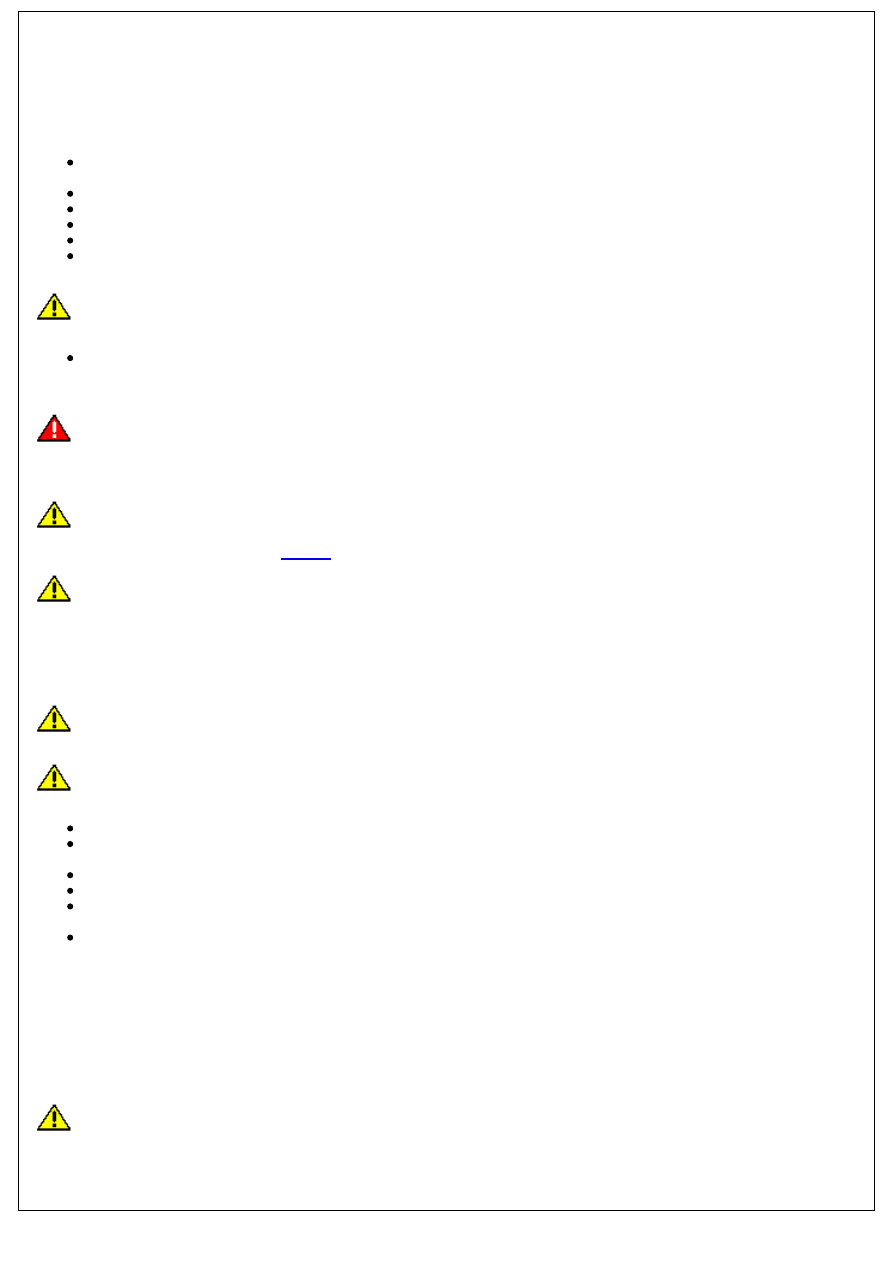Defender. Manual - part 2

General Information - Standard Workshop Practices
Description and Operation
Vehicle in Workshop
When working on a vehicle in the workshop always make sure that:
Where practicable, the parking brake is applied and the wheels are securely chocked to prevent the vehicle
moving forwards or backwards.
Whenever possible, the ignition key is removed before any work is carried out on the vehicle.
If the engine is to be run, there is adequate ventilation, or an extraction hose is used to remove exhaust fumes.
There is adequate room to raise the vehicle and remove the wheels, if necessary.
Fender covers are always installed if any work is to be carried out in the engine compartment.
Where practicable, the battery is disconnected if working on the engine, underneath the vehicle, or if the vehicle
is raised.
CAUTION: When electric arc welding on a vehicle, always disconnect the generator wiring to prevent the possibility
of a surge of current causing damage to the internal components of the generator.
If using welding equipment on the vehicle, a suitable fire extinguisher is readily available.
Battery - General
WARNING: It is essential that a period of 10 minutes elapses after the battery is disconnected before
any work is undertaken on any part of the SRS system.
• CAUTIONS:
Prior to carrying out any procedures which involve disconnecting/ or connecting the battery, refer to the Electrical
Section of this manual - Battery disconnection/connection.
For additional information, refer to:
Battery
(414-01 Battery, Mounting and Cables, Removal and Installation).
A discharged battery condition may have been caused by an electrical short circuit. If this condition exists there
will be an apparently live circuit on the vehicle even when all normal circuits are switched off. This can cause arcing
when the jumper cables are connected.
Jump Starting a Vehicle
• CAUTIONS:
While it is not recommended that a vehicle is jump started, it is recognized that this may occasionally be the only
practical way to mobilize a vehicle. Reference should be made to the following.
It is advisable not to use starter/charger sets for jump starting but if this is unavoidable, make sure that the sets
are not used in the 'START' mode.
Always make sure that the jumper cables are adequate for the task.
Always make sure that the slave battery is of the same voltage (12 volts) as the vehicle battery. The batteries
must be connected in parallel.
Make sure that the battery terminals of both batteries are fully tightened.
Where another vehicle is used to jump start a disabled vehicle, make sure that the two vehicles are not touching.
It is advisable that the engine of the donor vehicle is switched off during jump starting; take care to make sure
that the battery of the donor vehicle does not also become discharged.
Always make sure that switchable electric circuits are OFF before connecting jump cables. This reduces the risk of
arcing occurring when the final connection is made.
Following jump starting of a disabled vehicle, the discharged battery must be checked for serviceability and recharged as
soon as possible to avoid permanent damage.
Do not rely on the generator to restore a discharged battery. For a generator to recharge a battery, it would take in
excess of eight hours continuous driving with no additional loads placed on the battery.
Trickle charging (defined as voltages <16 volts) may be carried out with the battery connected. Make sure that the
battery terminals are fully tightened prior to trickle charging.
CAUTION: Boost charging may only be carried out with the battery disconnected from the vehicle.
Towing the Vehicle
• CAUTIONS: